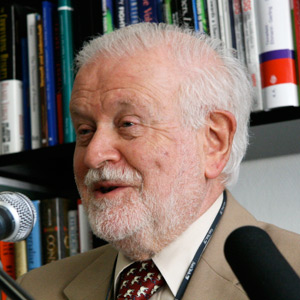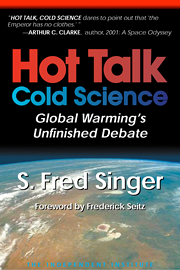Science mag is publishing a blockbuster paper today, on June 4. Oh boy! Get ready to watch yet another big fight about climate change—this time mainly among different groups of climate alarmists. Is there a “pause”? Did global climate really stop warming during the last dozen years, 18 years, or even 40 years—in spite of rising levels of the greenhouse (GH) gas carbon dioxide?
The renowned National Climate Data Center (NCDC), a division of NOAA located in Asheville, NC, claims that the widely reported (and accepted) temperature hiatus (i.e., near-zero trend) is an illusion—just an artifact of data analysis—and that the global climate never really stopped warming. If true, what a blessing that would be for the UN-IPCC—and for climate alarmists generally, who have been under siege to explain the cause of the pause.
This paper is turning out to be a “big deal.” The publisher of Science has even issued a special press release, promoting the NCDC claim of continued slow but steady warming.
Of course, NCDC-NOAA and Science may end up with egg on their collective faces. It does look a little suspicious that NCDC arrived at this earth-shaking “discovery” after all these years, after “massaging” its own weather-station data, just before the big policy conference in December in Paris that is supposed to slow the rise of CO2 from the burning of energy fuels, coal, oil, and gas.
Now watch the sparks fly—as there are two major constituencies that have a vested interest in the pause:
There are at least two rival data centers that may dispute the NCDC analysis: the Hadley Centre in England and the NASA-Goddard Institute for Space Studies (GISS).In fact, Hadley’s partner, the Climate Research Unit at the University of East Anglia, was the first to announce, on the BBC, the existence of a pause in global warming.
Then there are also dozens of scientists who have published research papers, purporting to provide an explanation for the reported pause.Yours truly turns out to be amongst these.They will all be mightily disappointed if their intellectual efforts turn out to be for naught.
But hold on. NCDC may turn out to be quite wrong. Not surprisingly, they used the surface temperature record, with its well-known problems. Not only that, but a look at the detailed NCDC evidence shows that much depends on polar temperatures—which are mostly guessed at, for lack of good observations. If one uses the (truly global) satellite data, analyzed either by UAH or by RSS, the pause is still there, starting around 2003 [see Figure; it shows a sudden step increase around 2001, not caused by GH gases].
Not only that, but the same satellite data show no warming trend from 1979 to 2000—ignoring, of course, the exceptional super-El-Nino year of 1998.This finding is confirmed by other, independent instrumental data—and also by (non-instrumental) proxy records (from tree rings, ice cores, lake sediments). This leads to important far-reaching consequences that are more fully discussed and referenced in the reports of NIPCC (Non-governmental International Panel on Climate Change) [search NIPCCreport.org, esp. the CCR-II report of 2013].
UN-IPCC claims for AGW undermined
IPCC-4 [2007] and IPCC-5 [2013] both present claims for anthropogenic global warming (AGW) that are based mainly on reported surface warming from 1979 to 2000. In the absence of such a warming trend, the IPCC claims become invalid; there would be no human-caused greenhouse warming in the 20th century—and certainly not earlier.
It is worthwhile, therefore, to re-examine carefully the absence of warming in the last two decades of the 20th century.
The satellite results of near-zero warming trend are fully backed by radiosonde data from balloon flights—notwithstanding spurious claims by Santer et al [in Int’l J of Climatology 2008; see full discussion by Singer in Energy&Envir 2013].The absence of a tropical “Hotspot” (a once-controversial upper-troposphere warming trend) “makes the cheese more binding.”
Sea-surface temperatures (SST) show only a slight warming—as do night-time marine air temperatures (NMAT), assembled by the Hadley group. Data on ocean heat content before 2000 are spotty and not very useful. In any case, the interpretation of vertical temperature profiles would require factoring in ocean circulation at different levels.
Proxy data of various types, assembled by Fredrik Ljungqvist in Sweden, and independently by NOAA scientist David Anderson, generally show no warming; Michael Mann never released his post-1979 proxy data, and has even denied their existence (in a personal 1990 email); one suspects that the reason is they show no warming.
A quick word about the observed (and genuine) warming interval 1910-40. It can be seen not only in surface thermometers at weather stations, temperature records from ships, but in all published proxy records. Alas, I could not find any atmospheric temperature data for that period. It is generally agreed, however—including by IPCC—that this warming is of natural origin and not from GH gases.
Thus there is no evidence whatsoever of any warming from human-released CO2 during the whole of the 20th century or earlier.
The bottom line
One can certainly argue about whether the NCDC results are correct—and I expect many months of back-and-forth. So, has global warming really stopped? We will know for sure in just a few years.
There will certainly be debate also about my proposition of no evidence at all for AGW. We will need a persuasive answer to the puzzle—why do land thermometers show a warming before 2000, but not after 2000? I may have an answer, but must first try to convince my colleagues.
One thing is quite certain, however: Current IPCC climate models cannot explain what the observations clearly show. This makes the models unsuitable for climate prediction — and for policy purposes generally.









